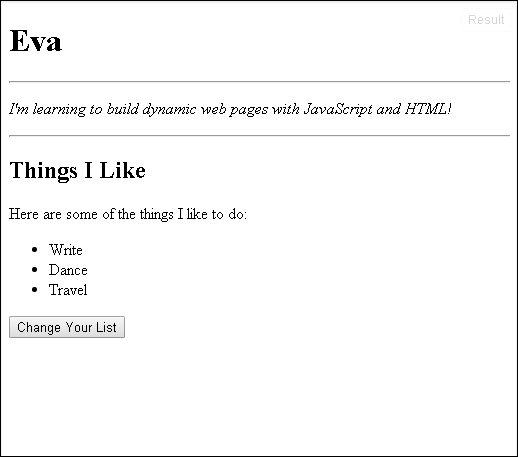Chapter 5
JavaScript and HTML
JavaScript and the web go together like cheese and pizza: You could have one without the other, but why?
JavaScript gives web pages the ability to change dynamically in response to user input. To get the most out of the integration between JavaScript and the web, you need to know a little bit about how web pages are built.
In this chapter, we explore the language of the web, HTML, and we show you how to use JavaScript to work with and change the HTML inside of web pages.

Writing HTML
HTML stands for Hypertext Markup Language. That’s a fancy way of saying that HTML is a language that’s used to create links (hypertext). HTML is so much more than simply a language for creating links, though.
HTML forms the skeleton that the text, pictures, and JavaScript in web pages attaches to.
Seeing what text looks like without HTML
Markup languages, such as HTML, were invented in order to give documents (such as letters, books, or essays) structure that a computer can understand and do things with.
Listing 5-1 shows a simple list that a person can understand with no problem.
Listing 5-1 A List
Things I Need
carrots
celery
spinach
As a person, you see this list and immediately understand it. But to a computer, this list has some issues. For example, a computer has no way of knowing that Things I Need is a title rather than an item on the list. Figure 5-1 ...
Get JavaScript For Kids For Dummies now with the O’Reilly learning platform.
O’Reilly members experience books, live events, courses curated by job role, and more from O’Reilly and nearly 200 top publishers.

